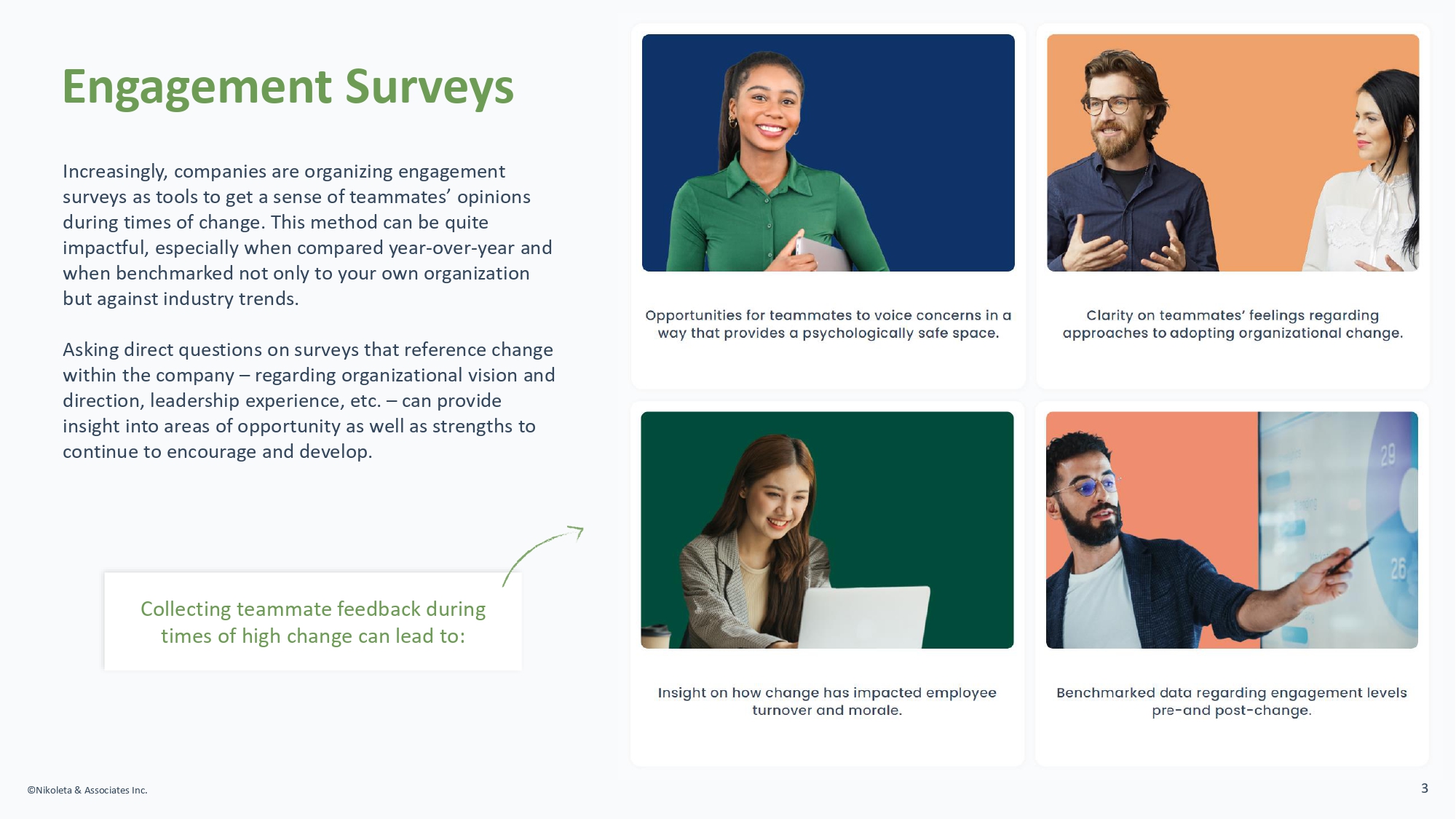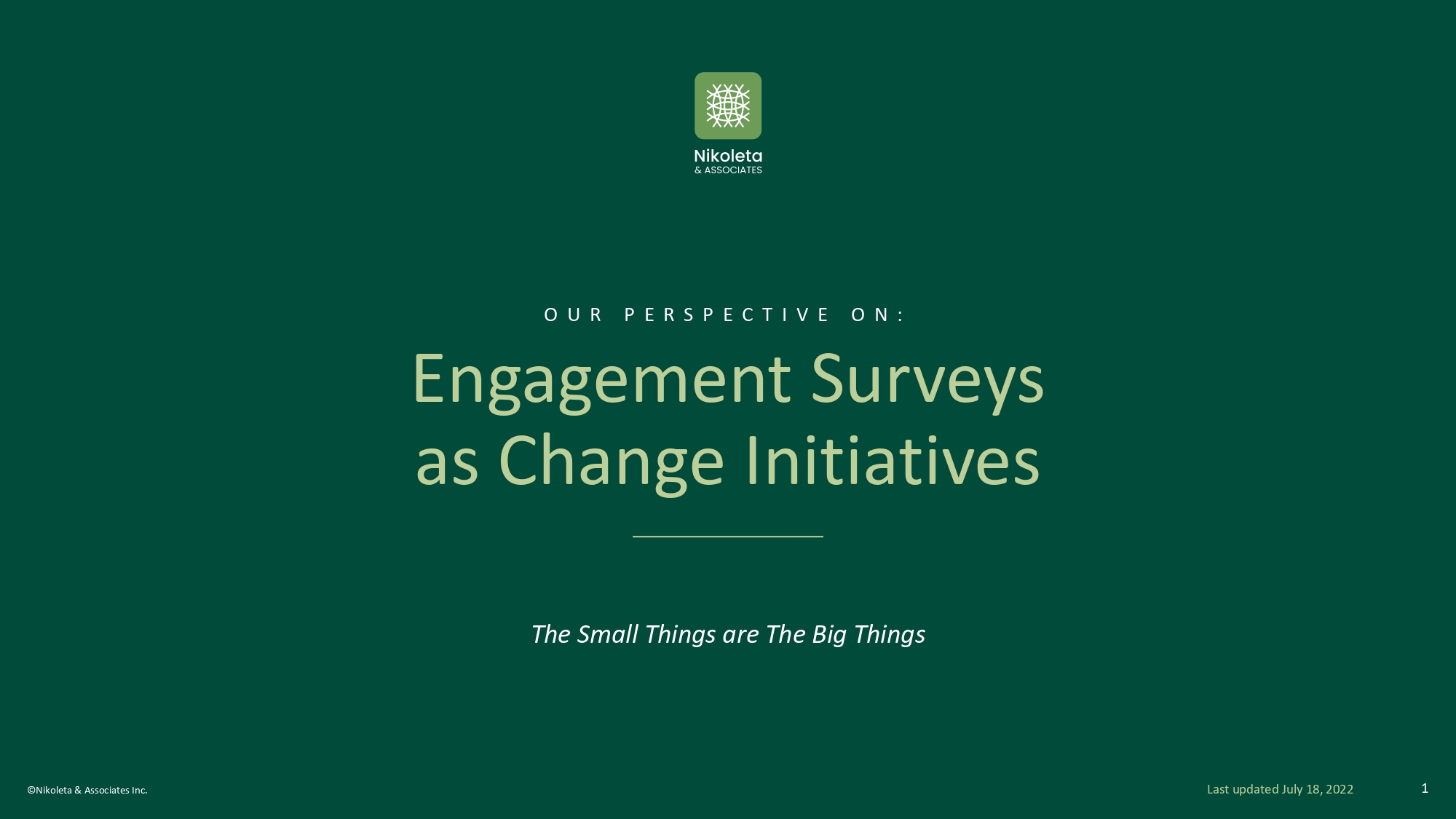Knowledge Kernel
Engagement Surveys as Change Initiatives


Embracing Change: How to Leverage Engagement Surveys for Effective Transformation
Change is an inherent aspect of life and business. At Nikoleta & Associates, we firmly believe that it is not an isolated event but a continuous process. However, managing change can be challenging, especially when leaders are stretched thin and employees are expected to adapt without fully understanding the reasons behind the shift.
One tool that can aid in this process is the engagement survey. These surveys not only serve as a catalyst for change but also as an organizational development tool, allowing leaders to gain invaluable insights into their team’s opinions and experiences.
The Role of Engagement Surveys in Change Management
Engagement surveys can provide critical feedback during times of significant change. By comparing data over several years and benchmarking against industry trends, companies can gain deep insights into the organization’s strengths and opportunities.
These surveys create a safe space for employees to express their concerns and feelings towards change, contributing to a more transparent and open communication environment. This transparency enhances engagement, efficiency, and overall trust within the organization.
When properly utilized, engagement surveys can provide:
- A clear understanding of employees’ feelings about the adoption of organizational change.
- Insight into the impact of change on employee turnover and morale.
- Benchmark data on engagement levels before and after the change.
Taking a Holistic Approach
While engagement surveys can be insightful, they are often used only annually, leaving a significant gap in continuous feedback. To address this, organizations can create multiple opportunities throughout the year to receive feedback in various formats.
For instance, organizations can:
- Allocate a portion of one-on-one meetings with managers for check-ins, allowing employees to clarify and ask questions regarding changes.
- Conduct a “listening tour,” where senior leaders engage with employees to understand their sentiments and concerns.
- Implement “stay interviews” to understand why employees choose to stay with the organization, offering insights into what the organization does well.
Beyond Listening: The Importance of Action
Merely collecting feedback is not enough. It’s crucial to translate this feedback into action. In doing so, leaders should be mindful of employees’ experiences within the process.
At Nikoleta & Associates, we recognize the importance of “emotional time.” The connection between change and emotions in a workplace setting is substantial. Emotions are an integral part of our experiences, and they undoubtedly influence our reaction to change.
When implementing change, having emotional awareness is crucial. Recognizing and addressing the emotional reactions of employees can build trust, encourage contribution, and highlight the benefits of engaging and participating in the change process.
By going beyond just listening and accounting for emotional time, organizations can create a more effective engagement survey process. This approach will lead to a more positive employee experience and enable organizations to manage change more effectively.















